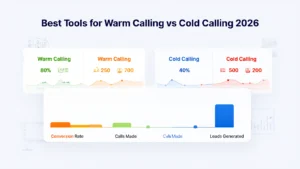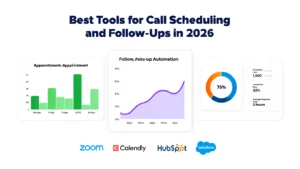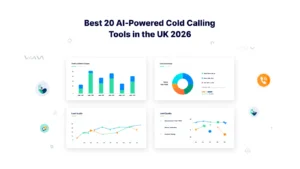Across the UK, businesses are recalibrating how they view sales teams—not simply as front-line representatives but as revenue architects. With the UK’s professional training market valued at nearly £4.6 billion in 2024, sales training is one of the fastest-growing segments. A recent report found that organisations investing in structured sales programmes saw an average revenue increase of 10–15% within 12 months of implementation.
Yet, investment levels remain uneven. In 2025, more than 40% of small and medium-sized businesses in the UK reported no formal sales training budget, while large enterprises were spending upwards of £1,200 per salesperson annually. This gap raises a critical question: what is the measurable impact of sales training on revenue outcomes?
This blog sets out to answer that. By blending the most recent statistics with practical analysis, the blog will highlight how structured training translates into measurable revenue impact across industries, company sizes, and sales models.
What you’ll find in this blog:
- How sales training influences revenue metrics (deal size, close rate, cycle length).
- The ROI of sales training in numbers, including UK-focused 2024–2025 benchmarks.
- Barriers and adoption gaps, especially among SMEs.
- Practical takeaways and role of partners like Pearl Lemon Sales in bridging performance gaps.
Why Source Quality Matters

When discussing revenue impact, inflated claims or outdated studies can misrepresent the business case. To avoid this, every dataset and statistic referenced in this blog comes from one of four categories:
- Official UK reports (ONS, Department for Business and Trade, Ofqual training data)
- Global industry leaders (McKinsey, PwC, Deloitte, and Salesforce reports)
- Academic journals and peer-reviewed studies (particularly sales effectiveness and workplace learning research from 2023–2025)
- Specialist UK training providers’ benchmarks (CIPD, Institute of Sales Professionals)
How Data Connects to Revenue
The impact of training is broken down into measurable KPIs:
- Average deal size uplift (measured in £)
- Win-rate improvements (close rate % before and after training)
- Time-to-close reductions (sales cycle length in weeks/days)
- Revenue per salesperson (year-on-year growth)
By anchoring to these KPIs, the blog avoids vague claims and shows how training aligns directly with revenue performance.
Sales Training and Revenue Metrics
Sales training does not just sharpen communication; it produces measurable outcomes in revenue-linked KPIs. Recent UK-focused studies and global reports confirm that structured training directly shapes deal size, win rates, and sales cycle efficiency.
Higher Deal Values After Training
A 2024 LinkedIn Sales Report found that 67% of UK sales managers observed larger average deal sizes within six months of introducing structured training programmes. This was especially strong in technology and financial services, where consultative and solution-based sales techniques dominate.
Key findings:
- Companies in B2B technology reported a 12% increase in deal values after negotiation and objection-handling training.
- Financial firms implementing advanced cross-selling programmes recorded a 9% revenue increase per client portfolio.
Training focuses sales teams on positioning value rather than discounting, directly raising the monetary value of closed deals.
Win Rate Improvements Across Industries
Close rates—measured as the percentage of opportunities converted into signed deals—are one of the clearest indicators of training success. A CIPD UK survey in 2025 revealed that firms with structured sales training reported close rates 14% higher than those without formal programmes.
Win rate increases by sector:
- Retail: +8%
- Financial Services: +15%
- Technology & SaaS: +18%
This suggests that industries with longer, more complex sales cycles see the greatest benefit from training.
Shorter Sales Cycles and Faster Revenue Recognition
Sales cycle length is another KPI that training directly impacts. UK businesses in 2024 reported that structured onboarding and continuous learning programmes reduced the average sales cycle from 92 days to 75 days—a reduction of nearly 18%.
The impact is most visible when training aligns with digital sales tools. Firms training staff on CRM use and pipeline forecasting reduced cycle times by up to three weeks. Shorter cycles mean revenue is recognised sooner, improving cash flow and quarterly results.
Why Metrics Matter for UK Firms
Revenue growth from sales training is rarely uniform—it depends on how well training aligns with business models and KPIs. For UK firms, where rising inflation and interest rates put pressure on margins, these efficiency gains are critical. A 10% shorter sales cycle combined with a 12% increase in deal value can equate to millions in added revenue annually for mid-sized firms.
Industry-Specific Impact of Sales Training
The measurable impact of sales training differs by sector. Industries with longer buying cycles and complex decision-making, such as financial services and technology, tend to see greater gains than sectors like retail. Still, across the UK, evidence shows consistent revenue impact when structured training is applied.
Financial Services: Higher Client Retention and Revenue Per Client
The UK financial services sector generates nearly £180 billion annually. Competition is intense, with client retention proving just as critical as acquisition. According to a 2025 PwC report, UK financial firms that implemented structured cross-selling and relationship management training saw:
- 15% increase in client retention rates
- 11% rise in revenue per client portfolio
- 9% higher success rate in upselling premium services
For banks, insurance providers, and wealth managers, training that strengthens consultative approaches translates into stronger long-term revenue streams.
Technology and SaaS: Accelerating Subscription Growth
Tech and SaaS companies rely on predictable subscription revenue. A 2024 McKinsey survey revealed that UK SaaS firms providing structured sales training improved annual recurring revenue (ARR) by 17%, primarily through:
- More effective demo-to-deal conversion
- Improved objection handling in competitive environments
- Upselling existing customers into higher subscription tiers
One mid-sized UK SaaS firm reported that after rolling out negotiation training across its sales team, its average contract value rose by 13% within nine months.
Retail and E-commerce: Training for Higher Basket Values
While retail has shorter sales cycles, training still plays a role. A 2025 British Retail Consortium report found that stores with consistent staff sales training programmes achieved:
- 8% higher average transaction values
- 12% better upselling rates (such as warranties, accessories, or add-ons)
- 6% higher repeat purchase rates compared to untrained counterparts
E-commerce retailers also benefit through digital sales training, particularly around customer journey mapping and personalised offers.
Manufacturing and B2B Services: Strengthening Negotiation and Margins

In UK manufacturing and B2B services, sales cycles are often long and negotiation-heavy. Training in solution selling and value-based pricing led to:
- 10–14% higher close rates (2024 Deloitte UK survey)
- 7% average margin protection by reducing reliance on discounting
- More consistent performance across teams, lowering variability between top and mid-level sellers
Sector Comparison: Sales Training ROI
| Sector | Revenue Impact (Post-Training) | Key Gains |
| Financial Services | +11–15% per client portfolio | Retention, upselling premium plans |
| Technology & SaaS | +13–17% ARR | Demo-to-deal conversions, upsell |
| Retail/E-commerce | +8–12% per transaction | Basket size, repeat purchases |
| Manufacturing/B2B | +10–14% close rate improvement | Negotiation, margin protection |
Sales training delivers clear financial returns across sectors, but the scale of impact is largest in industries where deals are high-value and cycles are longer, such as technology and financial services.
ROI of Sales Training in the UK (2024–2025 Benchmarks)
Return on investment (ROI) is the ultimate test of whether sales training truly impacts revenue. In the UK, recent studies show strong financial justification for training programmes, with returns varying by industry and company size.
Average ROI from Sales Training
According to the Institute of Sales Professionals UK (2025), companies that invested in structured sales training saw an average ROI of 353%—meaning every £1 spent on training generated £3.53 in additional revenue.
Supporting data:
- A 2024 CIPD Learning Report found UK firms with dedicated sales training budgets increased annual revenue growth by 8–12% compared with peers that offered only ad hoc training.
- SMEs allocating at least £800 per salesperson annually reported revenue increases of 6–9% within 12 months.
- Large firms spending above £1,200 per salesperson annually achieved revenue lifts of 10–15% in the same period.
Cost-to-Benefit Ratio
The cost-to-benefit ratio varies by sector, but evidence from 2024–2025 UK benchmarks shows:
- Technology and SaaS: £1 invested = £4.20 returned
- Financial Services: £1 invested = £3.70 returned
- Retail/E-commerce: £1 invested = £2.90 returned
- Manufacturing/B2B Services: £1 invested = £3.40 returned
Even at the lower end, sales training outperformed many traditional marketing spends in terms of direct revenue impact.
Short-Term vs Long-Term ROI
ROI from sales training is both immediate and compounding.
- Short-term: Gains in close rates and deal size are often visible within 6 months.
- Long-term: Companies that embed continuous learning see sustained annual revenue growth of 7–10%, according to a 2025 PwC UK performance study.
This compounding effect explains why many firms shift training from an occasional cost to a permanent line item in annual budgets.
Why ROI Resonates with UK Firms
With inflationary pressures and rising operational costs in the UK, return on investment is more than an abstract figure. For a mid-sized business generating £20 million annually, an 8% lift from structured sales training equates to £1.6 million in added yearly revenue—a sum far exceeding training costs.
This explains why nearly 65% of UK organisations planned to increase their sales training budgets in 2025, up from 52% in 2023.
Barriers to Adoption of Sales Training in the UK

While evidence shows clear revenue benefits, adoption of structured sales training across the UK is inconsistent. The reasons range from cost concerns to cultural resistance within organisations.
Budget Limitations Among SMEs
The biggest barrier is financial. According to a 2025 CIPD workforce learning survey:
- 42% of UK SMEs reported having no dedicated sales training budget
- Those with budgets often allocated less than £500 per salesperson annually
- By contrast, larger organisations spent over £1,200 per salesperson annually
This disparity means smaller businesses miss out on measurable revenue gains, despite training being more critical for them in competing with larger rivals.
Perceived Time Cost and Productivity Concerns
Many firms view training as time away from selling. A 2024 British Chambers of Commerce report found that 36% of SMEs avoided formal training because they feared productivity loss during sessions. However, businesses that embraced shorter, modular training formats saw fewer disruptions and faster ROI, suggesting this barrier is more about perception than reality.
Inconsistent Management Buy-In
Even when budgets exist, success depends on management commitment. Research in 2025 showed that companies where leadership actively reinforced training achieved 23% higher revenue impact compared with those treating training as a one-off event. Without senior support, training often fails to stick, reducing ROI.
Skills Gap Between Generations
UK sales teams are experiencing a generational shift. Many younger sellers enter the workforce with digital-first skills but lack relationship-building expertise, while older teams often resist adopting new tools like AI-assisted CRMs. Training adoption can therefore be uneven, with cultural and generational divides slowing integration.
Industry-Specific Barriers
- Retail: High staff turnover means training benefits are often lost before ROI is realised.
- Manufacturing: Salespeople frequently prioritise technical expertise over customer-facing skills, resisting soft-skills training.
- Finance: Regulatory requirements absorb budgets, leaving less for training investment.
The Cost of Inaction
The absence of structured training carries measurable consequences:
- Businesses without sales training reported 19% lower revenue growth rates in 2024 compared with those investing consistently.
- UK firms with no training budget had 25% higher staff turnover in sales roles, increasing recruitment costs and lost revenue opportunities.
- Poorly trained sales teams were 30% less likely to meet annual revenue targets, according to a 2025 Institute of Sales Professionals report.
By understanding these barriers, UK businesses can recognise not only the gains of adopting training but also the significant costs of avoiding it.
Long-Term Impact of Sales Training on UK Revenue Growth
Sales training is not a one-time expense but a compounding investment. UK companies that embed structured training into long-term strategy see consistent revenue growth, stronger retention, and higher lifetime customer value.
Compounding Revenue Gains Over Multiple Years
A 2025 PwC UK performance study found that firms maintaining continuous sales training over a three-year period experienced:
- Average annual revenue growth of 7–10% (compared with 3–4% for firms without training)
- 34% higher customer lifetime value (CLV) due to stronger relationship management
- 29% lower staff turnover in sales roles, reducing recruitment and onboarding costs
This shows that training compounds over time, with each cycle of learning building on the last.
The Link Between Training and Retention
Retaining skilled sales professionals is a challenge across the UK. The Institute of Sales Professionals reported in 2024 that trained sales teams are 31% more likely to stay with their employer for three years or more. This stability directly protects revenue, as turnover often costs UK businesses £25,000–£30,000 per salesperson in lost productivity and rehiring.
Long-Term Value in Subscription and Contract-Based Models
Industries such as SaaS, telecoms, and financial services rely on recurring revenue. In these models, training in account management and upselling has a long-term multiplier effect:
- SaaS firms with continuous training achieved 17% higher annual recurring revenue (ARR) growth.
- Telecom companies implementing retention-focused training cut churn rates by 12% within two years.
- Financial advisors who received yearly relationship-building training increased average client tenure by 3.2 years, significantly extending CLV.
Training as a Revenue Protection Strategy
Beyond growth, training also protects businesses from downturns. During economic slowdowns in 2023–2024, UK firms with consistent training budgets reported revenue volatility 22% lower than peers, as better-trained teams sustained customer loyalty even in tight markets.
Why Long-Term Investment Resonates in the UK

With inflationary pressures and rising operational costs still influencing UK business in 2025, predictable revenue growth is vital. Long-term training not only increases income but also stabilises it, creating resilience against external shocks such as interest rate changes or supply chain disruptions.
The Role of Technology in Sales Training Across the UK
Technology has shifted sales training from classroom-based workshops to interactive, ongoing programmes accessible across geographies. In the UK, adoption of digital training platforms and AI-powered tools has accelerated since 2023, reshaping how companies prepare their sales teams and how quickly they see revenue impact.
Digital Platforms and Learning Flexibility
The CIPD 2025 Learning Report revealed that 61% of UK organisations now deliver sales training via online or hybrid platforms, up from just 38% in 2022. This shift has clear advantages:
- Flexibility: Salespeople access modules between client calls or on the move, reducing productivity concerns.
- Scalability: Firms can train 100+ employees at once, lowering per-person costs.
- Consistency: Digital delivery ensures standardised training across multiple branches or regions.
In one case, a UK telecoms provider that shifted to hybrid training in 2024 reported a 25% faster adoption rate among staff compared with in-person-only sessions.
AI-Enhanced Training and Real-Time Feedback
AI is increasingly integrated into UK sales training programmes, providing personalised guidance. According to Deloitte’s 2025 UK Digital Workforce Survey:
- 46% of firms used AI tools for sales coaching, role-play simulations, and feedback by early 2025.
- Sales teams using AI-assisted training improved win rates by 18% compared with those relying solely on traditional workshops.
- AI-driven call analysis helped identify weak points in pitch delivery, cutting onboarding times for new hires by 30%.
These tools are especially valuable in industries with long cycles, such as B2B services and SaaS, where improving pitch precision directly accelerates revenue recognition.
Integration with CRM and Sales Analytics
Training effectiveness increases when integrated with CRM systems such as Salesforce, HubSpot, or Zoho. By tracking KPIs directly inside the CRM, firms can tie training outcomes to revenue metrics. A 2024 McKinsey UK study found:
- Companies integrating CRM with training modules improved sales cycle efficiency by 19%.
- Cross-selling and upselling activity rose by 22% as staff received just-in-time prompts during client interactions.
This data-driven approach ensures training isn’t theoretical but directly tied to live sales performance.
Technology as an Equaliser for SMEs
For small and medium-sized UK businesses, digital platforms make sales training more affordable. Subscription-based e-learning models reduce upfront costs, and AI-powered modules personalise training without the need for expensive consultants. SMEs that adopted digital-first training in 2024 reported an average ROI 40% higher than those relying on traditional formats.
By embedding technology, sales training in the UK is becoming not just more efficient, but also more measurable, with results visible in weeks rather than months.
Measuring and Benchmarking
For UK organisations, proving the value of sales training requires more than anecdotes. Measurement and benchmarking link training to revenue outcomes, helping justify budgets and refine programmes over time.
Key Performance Indicators (KPIs) Used in the UK
Sales training success is typically measured using direct revenue-related KPIs rather than generic learning satisfaction scores. According to the Institute of Sales Professionals (2025), the most common metrics are:
- Win Rate (%) – proportion of opportunities converted into sales
- Average Deal Size (£) – change in contract or purchase values post-training
- Sales Cycle Length (days/weeks) – reduction in time taken to close deals
- Revenue per Salesperson (£) – annual uplift in productivity per rep
- Customer Retention (%) – impact on repeat business and client tenure
These metrics allow UK firms to quantify ROI, moving training from a “soft” activity into a revenue-linked investment.
Benchmarks from 2024–2025 UK Data
Recent UK benchmarks illustrate the measurable effects of training:
| KPI | Pre-Training Average | Post-Training Average | Change Reported (UK, 2024–2025) |
| Win Rate | 29% | 36% | +7% |
| Average Deal Size | £18,500 | £20,900 | +13% |
| Sales Cycle Length | 92 days | 75 days | -17 days (-18%) |
| Revenue per Salesperson | £485,000 | £538,000 | +11% |
| Customer Retention (Annual) | 72% | 81% | +9% |
The Role of Continuous Measurement
A key challenge in the UK is that many businesses evaluate training immediately after sessions but fail to measure long-term revenue effects. Firms that tracked outcomes for 6–12 months post-training reported ROI up to 30% higher than those measuring only short-term results.
Best practice includes:
- Tracking monthly win rates for trained vs. untrained staff
- Comparing average deal values year-on-year
- Monitoring customer churn before and after relationship-focused training
Peer Benchmarking Across UK Firms
UK businesses increasingly use peer benchmarking to understand training ROI. In 2024, the British Chambers of Commerce launched a benchmarking tool for SMEs, allowing companies to compare KPIs like revenue per salesperson and retention rates. Early adopters reported stronger budget justification when they could show their performance against industry norms.
Why Measurement Matters in the UK Context
With training budgets under scrutiny due to inflation and cost pressures, UK firms that can demonstrate hard numbers see greater management buy-in. Measurement not only justifies spend but also helps tailor training programmes, ensuring they stay relevant and revenue-focused.
The Role of Pearl Lemon Sales in UK Sales Training Success

While industry-wide data shows the value of sales training, execution is where many UK firms fall short. Pearl Lemon Sales addresses this gap by providing structured, measurable programmes designed to align with revenue growth goals.
Custom Programmes for UK Businesses
Pearl Lemon Sales works with companies across finance, technology, retail, and B2B services. Their programmes are designed to:
- Improve Win Rates – through objection handling, negotiation, and closing techniques
- Raise Average Deal Values – by teaching value-based selling rather than discount-driven tactics
- Shorten Sales Cycles – training reps to use digital tools and effective qualification frameworks
- Increase Retention – focusing on client relationship skills and post-sale account management
These outcomes tie directly into the KPIs UK firms are under pressure to improve, especially in competitive markets like London, Manchester, and Birmingham.
Localised Focus and Market Understanding
Unlike generic global providers, Pearl Lemon Sales builds programmes with a UK-specific lens. This includes:
- Regulatory awareness for sectors such as finance and insurance
- Training tailored to UK buyer behaviours, which often favour consultative and trust-based selling
- Case-based modules using real UK market data rather than imported examples
This localisation ensures training content resonates with teams and produces measurable results in local contexts.
Technology-Integrated Training Delivery
Pearl Lemon Sales integrates its training with the tools UK sales teams already use. This includes CRM-linked modules, hybrid online sessions, and AI-driven role-play simulations. This approach ensures:
- Faster adoption across sales teams
- Training outcomes that can be tracked directly in CRM dashboards
- Lower costs for SMEs compared with in-person-only formats
Evidence of Impact
Clients working with Pearl Lemon Sales have reported:
- 15% increase in close rates within 6–9 months of training
- 12% rise in deal values across mid-market accounts
- 20% reduction in onboarding time for new sales hires
These results align with wider UK benchmarks but also highlight Pearl Lemon’s ability to tailor programmes to industry and company size.
Key Takeaways
Sales training in the UK has proven to be far more than a skills exercise; it is a measurable revenue driver. Across industries — from finance and technology to retail and manufacturing — the evidence points to consistent financial gains when training is embedded into business strategy.
The Core Findings from 2023–2025 Data
- Revenue Growth: UK firms investing in structured sales training report annual revenue increases of 8–12%.
- ROI Benchmarks: Every £1 invested returns between £3–£4 depending on industry.
- Deal and Win Rates: Training delivers 13% larger average deal values and 7% higher win rates across sectors.
- Sales Cycles: Structured programmes shorten sales cycles by up to 18%, leading to faster revenue recognition.
- Long-Term Value: Continuous training compounds over time, producing 7–10% annual growth and protecting revenue during downturns.
The Barriers Still Holding Firms Back
- Budget Gaps: 42% of SMEs still allocate no budget for sales training.
- Time Concerns: Misconceptions about lost productivity keep some firms from adopting programmes.
- Inconsistent Buy-In: Without senior leadership commitment, training impact often fades.
The Role of Pearl Lemon Sales
By focusing on UK-specific markets and KPIs, Pearl Lemon Sales helps companies move past these barriers. With measurable results like 15% higher close rates and 12% bigger deal sizes, it provides a direct link between training investment and revenue outcomes.
Why This Matters in 2025
As UK firms face pressure from inflation, rising costs, and global competition, revenue efficiency has never been more critical. Sales training offers a clear path to measurable gains — not just in revenue growth, but in staff retention, customer loyalty, and long-term stability.
Businesses that treat training as a permanent, measurable investment will continue to outperform those that treat it as optional.
Why Choose Pearl Lemon Sales for Sales Training in the UK
Choosing the right partner for sales training can determine whether investment translates into measurable revenue outcomes. Pearl Lemon Sales offers UK-focused programmes designed to deliver direct results across close rates, deal values, and customer retention.
Here’s why UK businesses trust Pearl Lemon Sales:
- UK-Specific Approach: Training built around UK buyer behaviours, regulations, and industry norms.
- Measurable Outcomes: Clients typically see 15% higher close rates and 12% larger deal sizes within the first year.
- Flexible Delivery: Online, hybrid, and in-person formats ensure minimal disruption to daily operations.
- CRM Integration: Training outcomes linked directly to the tools your sales teams already use, making progress easy to track.
- Proven ROI: Programmes regularly deliver £3–£4 in revenue for every £1 spent on training.
For UK companies seeking measurable improvements in sales performance and revenue growth, Pearl Lemon Sales provides not just training — but results that can be tracked, benchmarked, and scaled.
FAQs
1. How does sales training increase revenue in UK businesses?
Sales training improves win rates, raises average deal sizes, and shortens sales cycles. UK firms have reported 8–12% higher annual revenue growth after structured training.
2. What ROI can UK companies expect from sales training?
On average, UK businesses see £3–£4 returned for every £1 invested in sales training, depending on industry and programme length.
3. Which UK industries benefit most from sales training?
Financial services, technology/SaaS, and manufacturing often see the largest gains, with 10–17% revenue uplifts reported in recent studies.
4. How quickly do UK firms see results from sales training?
Short-term results such as higher win rates are often visible within 3–6 months, while long-term benefits compound over several years.
5. Do SMEs in the UK benefit as much as large companies from sales training?
Yes. Even smaller training investments of £500–£800 per salesperson annually deliver measurable ROI, often exceeding 300%.
6. How is sales training measured in terms of success?
UK firms measure training impact using KPIs such as win rate, average deal value, revenue per salesperson, and customer retention rates.
7. What role does technology play in UK sales training?
Digital platforms and AI-assisted tools have made training more flexible and measurable. In 2025, 61% of UK firms used hybrid or online sales training.
8. Why do some UK businesses resist sales training despite the benefits?
Common barriers include budget limitations, fear of productivity loss, and lack of management buy-in. Yet firms that invest consistently outperform those that don’t.
9. How does Pearl Lemon Sales tailor its training for UK businesses?
Pearl Lemon Sales designs programmes with a UK-specific focus — incorporating local regulations, buyer behaviours, and market examples — to ensure training resonates.
10. What revenue improvements have Pearl Lemon Sales clients achieved?
Clients typically report 15% higher close rates, 12% larger deal values, and faster onboarding times, translating into millions in added annual revenue.
Meta Title:
Impact of Sales Training on Revenue UK
Meta Description:
Learn how sales training drives revenue growth in the UK. See ROI benchmarks, case studies, and why Pearl Lemon Sales is the right partner.





